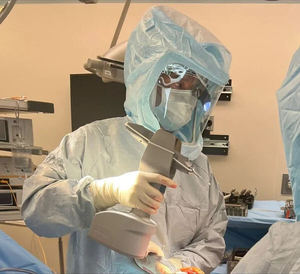FDA finalizes a policy that will enable the agency to notify the public about "emerging signals" for medical devices in the postmarket setting—and the device industry won't be happy.
December 13, 2016

Almost a year after its draft guidance proposing public notification of emerging signals for postmarket medical devices, FDA is issuing final guidance putting the policy in place. The agency intends for emerging signals to give patients and physicians the latest information about the risks and benefits of medical devices on the market, but device manufacturers and industry groups voiced their opposition to the idea earlier this year.
The December 14 final guidance appears to be identical to the draft guidance that was released at the end of 2015. In it, FDA sets out the process for evaluating available information about a medical device and determining whether there is an emerging signal. The agency defines an emerging signal as evidence of "a new causal association or a new aspect of a known association between a device and an adverse event or set of adverse events" that could be meaningful to patient management or the device's benefit-risk profile.
FDA plans to determine what is an emerging signal by collecting information, working with device manufacturers, conducting an expert review, bringing in other stakeholders, including oversight by management, according to the guidance document.
FDA makes clear in the final guidance that "Information that is unconfirmed, unreliable, or lacks sufficient strength of evidence is not an emerging signal." According to the document, public notification of an emerging signal would take place when there is evidence of a new causal assocation but more analysis or time is needed for FDA to make a decision, or if FDA has already decided a causal relationship is there but needs more advice or time to determine next steps.
A number of members of the Patient, Consumer, and Public Health Coalition offered their support of emerging signals during the public comment period on the draft guidance. They wrote that "the draft guidance addresses a serious problem: the delay between early signals that a device is less safe or less effective than expected, and the development of confirming evidence that the FDA would like to have before making recommendations."
Device makers, on the other hand, were not as supportive of the specifics of the emerging signals guidance. In a comment letter, Stephen Ferguson, board chairman of Cook Group Inc., wrote that while the company supports the idea of better postmarket surveillance, an emerging signal could harm the reputation of safe devices and potentially encourage unfounded lawsuits. He wrote:
"The impact of an 'Early Communication' will be very similar to that of a recall but have a great impact . . . public notice of emerging signals that are not fully vetted with cast a shadow not only over a specific lot of devices or over a particular device from a particular manufacturer. Instead, it will throw into doubt all devices of the same type from all manufacturers. Further, there is no doubt that the plaintiffs bar will be advertising to find patients who have been treated with the products in question in order to provide the basis for lawsuits, many of which will be frivolous."
In a February 9, 2016 Lawflash notice regarding the draft guidance, lawyers from Morgan Lewis wrote, "Given FDA's intent to release benefit-risk information to the public earlier in the process, medical device manufacturers will need to closely monitor any Emerging Signals associated with their own devices to ensure that FDA has all the appropriate information regarding the risk-benefit profile of such devices. Release of unconfirmed or incomplete information could increase medical device manufacturers' liability exposure."
The draft guidance also drew opposition from The 510(k) Coalition, the Medical Imaging and Technology Alliance (MITA), GE Healthcare, the Medical Device Manufacturers Association (MDMA), and the Advanced Medical Technology Association (AdvaMed), among others. These stakeholders pointed to the potentially "confusing" nature of the notifications, wrote that they felt more details were needed on the data, timelines, and decision-making standards to be used by FDA, and urged closer involvement with the device manufacturers throughout the evaluation process.
In the final guidance, FDA does note that it intends to reach out to device companies before publishing a public notification, "unless time does not permit because of the risk of patient harm or it is not feasible . . ."
MITA wrote in its comment on the draft guidance, "It is important that the Agency engage manufacturers while the available information is being reviewed to determine if public notification of an emerging signal is required. Such consultation would ensure that manufacturers are afforded due process as well as ensure that the Agency is, in fact, relying on all potential sources on information."
[Image courtesy of GERALT/PIXABAY]
About the Author(s)
You May Also Like


